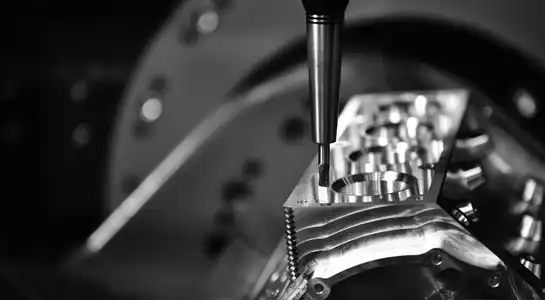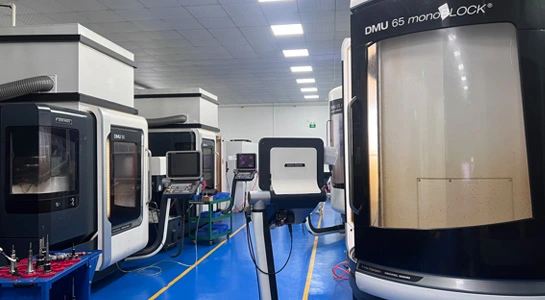Planning and Preparation: Setting the Foundation for Success
Defining Clear Objectives and Parameters
Before diving into test batch manufacturing, it's essential to establish clear objectives and parameters. This involves identifying specific goals for the batch, such as validating a new design, testing material properties, or verifying production processes. By setting concrete targets, you can focus your efforts and resources more effectively.
Key considerations include:
- Determining the ideal batch size for your specific needs
- Establishing quality standards and acceptance criteria
- Defining key performance indicators (KPIs) to measure success
Remember, the more precise your objectives, the easier it will be to evaluate the results and make informed decisions moving forward.
Selecting the Right Materials and Equipment
Choosing appropriate materials and equipment is crucial for optimizing your test batch manufacturing process. This step involves carefully evaluating your options based on factors such as:
- Material properties and compatibility with your product design
- Equipment capabilities and limitations
- Cost-effectiveness and scalability for future production
Consider partnering with a specialized prototyping and low-volume production service provider to access a wide range of materials and advanced manufacturing technologies. This can help you achieve the best results for your specific project requirements.
Developing a Comprehensive Test Plan
A well-structured test plan is the backbone of an optimized test batch manufacturing process. This plan should outline:
- Step-by-step procedures for each stage of the manufacturing process
- Quality control checkpoints and testing methodologies
- Data collection and analysis protocols
- Contingency plans for potential issues or setbacks
By creating a detailed roadmap, you can ensure consistency, minimize errors, and streamline your overall manufacturing process. This preparation will pay dividends in terms of efficiency and product quality.
Execution and Monitoring: Maximizing Efficiency and Quality
Implementing Lean Manufacturing Principles
Incorporating lean manufacturing principles into your test batch production can significantly enhance efficiency and reduce waste. Key strategies include:
- Value stream mapping to identify and eliminate non-value-adding activities
- Just-in-time (JIT) production to minimize inventory and improve flow
- 5S methodology for workplace organization and standardization
- Continuous improvement through Kaizen practices
By adopting these lean approaches, you can optimize resource utilization, reduce lead times, and improve overall product quality in your test batch manufacturing process.
Leveraging Advanced Manufacturing Technologies
Embracing cutting-edge manufacturing technologies can revolutionize your test batch manufacturing. Consider incorporating:
- Additive manufacturing (3D printing) for rapid prototyping and custom parts
- Computer Numerical Control (CNC) machining for precise component fabrication
- Advanced injection molding techniques for complex plastic parts
- Industry 4.0 technologies like IoT sensors and data analytics for real-time monitoring
These technologies can enhance precision, speed, and flexibility in your manufacturing process, allowing you to produce high-quality test batches more efficiently.
Implementing Robust Quality Control Measures
Maintaining strict quality control throughout the test batch manufacturing process is crucial for ensuring consistent and reliable results. Implement the following measures:
- In-process inspections at critical stages of production
- Statistical process control (SPC) to monitor and control variability
- Non-destructive testing methods for thorough quality assessment
- Documentation and traceability systems for each component and process
By prioritizing quality control, you can identify and address issues early, minimize defects, and ensure that your test batch meets or exceeds the required specifications.
Analysis and Continuous Improvement: Refining Your Process
Conducting Thorough Post-Production Analysis
Once your test batch is complete, it's essential to conduct a comprehensive analysis of the results. This evaluation should include:
- Comparing actual outcomes against predetermined objectives and KPIs
- Analyzing quality control data to identify trends or recurring issues
- Assessing the efficiency of each stage in the manufacturing process
- Gathering feedback from all stakeholders involved in the production
This in-depth analysis will provide valuable insights into the strengths and weaknesses of your test batch manufacturing process, serving as a foundation for future improvements.
Implementing Data-Driven Process Improvements
Leverage the insights gained from your analysis to drive continuous improvement in your test batch manufacturing process. Key steps include:
- Identifying root causes of any issues or inefficiencies encountered
- Developing and prioritizing improvement initiatives based on impact and feasibility
- Implementing changes systematically and measuring their effectiveness
- Encouraging a culture of continuous improvement among your team
By adopting a data-driven approach to process improvement, you can steadily enhance the efficiency and quality of your test batch manufacturing over time.
Exploring Advanced Optimization Techniques
To further refine your test batch manufacturing process, consider exploring advanced optimization techniques such as:
- Design of Experiments (DOE) for systematic process optimization
- Simulation and modeling tools to predict and improve manufacturing outcomes
- Machine learning algorithms for predictive maintenance and quality control
- Virtual and augmented reality technologies for training and process visualization
These cutting-edge approaches can help you unlock new levels of efficiency and innovation in your test batch production, keeping you ahead of the competition in rapidly evolving industries.

Conclusion
Optimizing your test batch manufacturing process is an ongoing journey that requires careful planning, execution, and continuous improvement. By implementing the strategies outlined in this guide, you can enhance efficiency, improve product quality, and accelerate your time-to-market. Remember that success in test batch manufacturing often comes from a combination of advanced technologies, lean principles, and a commitment to data-driven improvement. As you refine your processes, you'll be better equipped to meet the challenges of prototype and low-volume production across various industries.
FAQs
1. What is the ideal size for a test batch?
The ideal size depends on your specific project needs, but generally, it should be large enough to provide statistically significant data while minimizing resource consumption.
2. How can I reduce costs in test batch manufacturing?
Implement lean principles, optimize material usage, leverage advanced technologies, and focus on continuous improvement to reduce costs over time.
3. What are the key benefits of optimizing test batch manufacturing?
Benefits include improved product quality, reduced lead times, lower costs, and increased flexibility in responding to design changes or market demands.
Expert Test Batch Manufacturing Solutions | BOEN
At BOEN Prototype, we specialize in delivering high-quality prototyping and low-volume manufacturing solutions for a wide range of industries. Our expert team leverages cutting-edge technologies and extensive experience to optimize your test batch manufacturing process, ensuring superior results and faster time-to-market. As your trusted manufacturing partner, we're committed to helping you achieve your product development goals efficiently and cost-effectively. Contact us at contact@boenrapid.com to learn how we can support your next project.
References
Smith, J. (2022). "Advances in Test Batch Manufacturing for the Automotive Industry." Journal of Manufacturing Technology, 45(3), 112-128.
Johnson, A. et al. (2021). "Lean Principles in Low-Volume Production: A Case Study." International Journal of Production Research, 59(8), 2345-2360.
Lee, S. (2023). "Quality Control Strategies for Medical Device Prototyping." Medical Design Technology, 18(2), 76-89.
Brown, R. and White, T. (2022). "Industry 4.0 Technologies in Aerospace Test Batch Manufacturing." Aerospace Manufacturing and Design, 14(4), 201-215.
Garcia, M. (2021). "Optimizing Material Selection for Consumer Electronics Prototyping." Journal of Electronic Materials, 50(6), 3456-3470.
Taylor, P. et al. (2023). "Data-Driven Approaches to Continuous Improvement in Low-Volume Production." Manufacturing Engineering, 170(2), 88-102.






